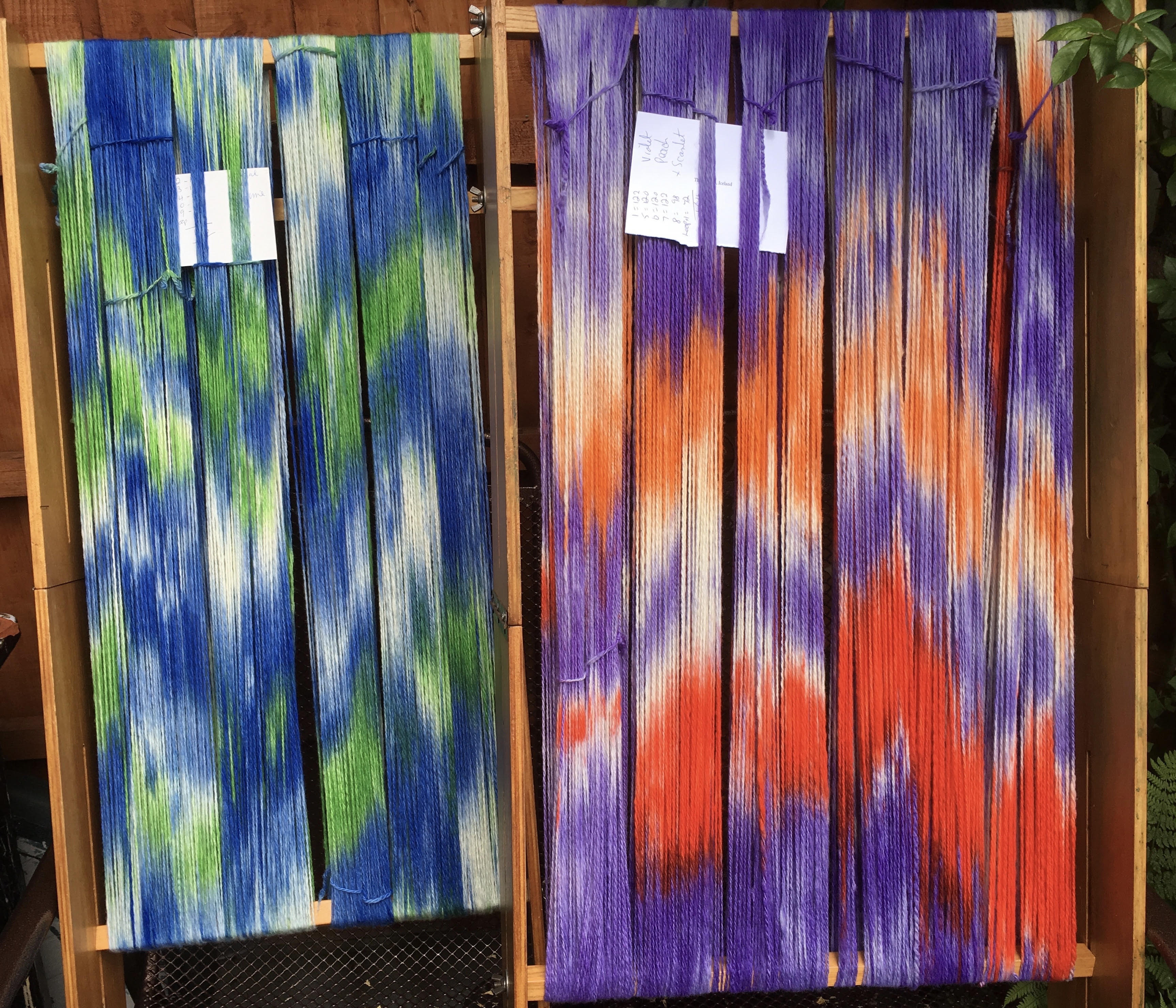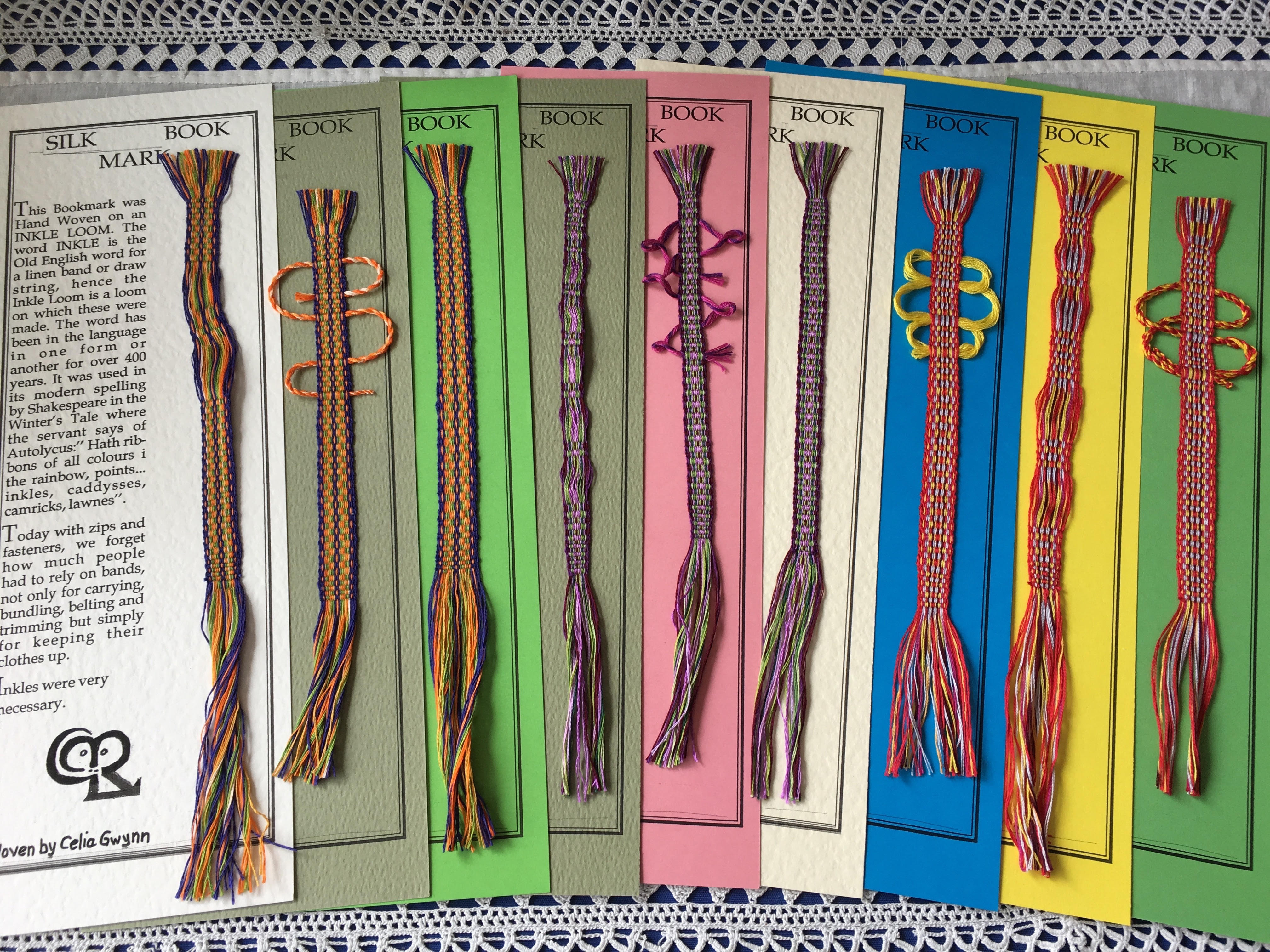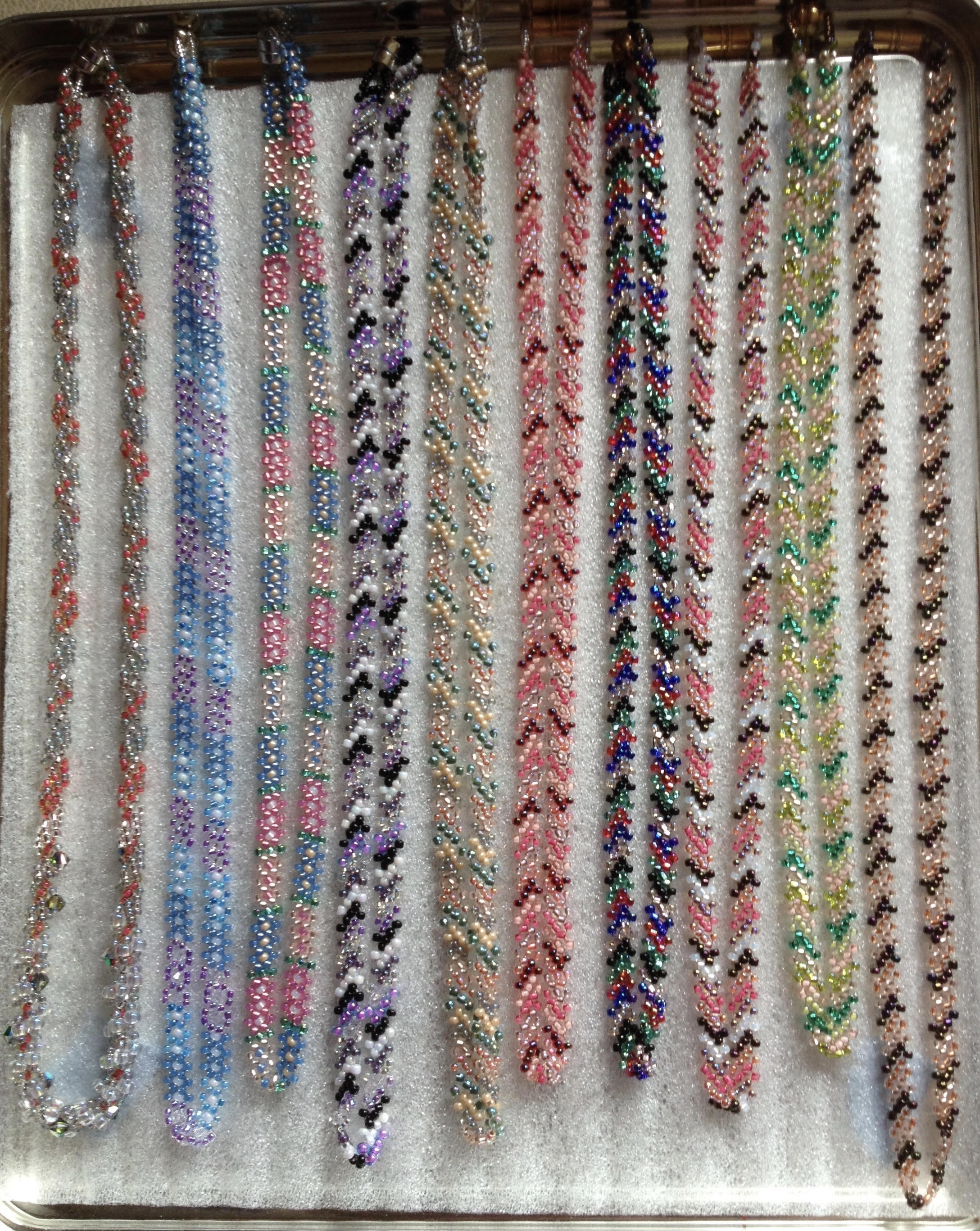
My mother taught my sister & I to knit, sew, & cross stitch etc., when we were about 4 & 5 yrs old. Since then I’ve spent time enjoying many other practical crafts, about 20 so far, as I’ve always been interested in making things. I do the following on a regular basis.
I have been spinning since the late 1980’s having learned the basics whilst on a weaving holiday with Martin Weatherhead in Pembrokeshire, South Wales. His web site is www.snail-trail.co.uk. Over the years I’ve taken courses in spinning techniques, yarn design & hand dying. This culminates in what I do today, spinning yarn in sufficient quantities to knit or crochet into a garment.
Since I really enjoy the spinning process I looked round to see how I could use the wool I had made & noticed there were few chances for those who loved knitting & crocheting to use a hand-spun yarn, so I designed a few patterns which I got checked by professional knitters. They advised that the patterns worked up better in a slightly thicker yarn, so I spin a double knitting - arran weight yarn. I put several skeins of wool together to make the quantity required for one of my patterns, & dye these packs individually.
I use the spinning technic known as “Long Draw’ as I find its a quicker & more relaxing way to work. It was the original way of spinning on a drop spindle before wheels were invented. The ‘Draw’ is the amount of yarn you draw or draft before letting it store on the bobbin. The first recorded spinning wheel is from about the 1340’s, & was called the Great Wheel, (the wheel being about 4ft). It was sometimes called a walking wheel as you had to walk to make the thread. These were followed by smaller treadle wheels & you sat in front of the wheel to work. This changed the spinning method to a ‘short draw’.

The thickness of a hand spun yarn may vary along its length, so knitting or crocheting with it offers a different experience. I always note on the label which breed of sheep I’ve used. Most skeins are 100% pure wool, but sometimes I include other fibres, i.e. silk or alpaca etc., which is also detailed on the label. I get most of my alpaca & some of my sheep fleece in its untreated state locally here in East Anglia. Other fleece I get from special suppliers for hand spinners which has been cleaned & prepared ready to spin.
When using untreated fibres I start by washing & drying it naturally, then its carded to make it easier to spin a thread onto the bobbin. After spinning several bobbins, take an end from two & spin the wheel in reverse to ply them together to make the finished yarn. This is then wound into a skein on a Niddy Noddy, before washing to set the twist & effect any shrinkage. If I’m going to dye the wool I do so at this stage. I don’t keep a note of how I’ve dyed them, which makes each Pack completely individual. It takes me about 2hrs to make an ounce or 25gm of yarn.
I purchased my inkle loom during my first weaving holiday with Martin Weatherhead in Pembrokeshire, South Wales in the late 1980’s. I now weave bookmarks using 1 & 2 strands of embroidery silks so the bookmark is not too thick to damage the binding in a book. I get 5 - 6 bookmarks from one length of weaving. I don’t make any two the same. I hand stitch these onto a card detailing some of the history of the loom etc. These are easily posted being light and flexible. They are very popular with bookmark collectors because of their uniqueness.


Following a request at an event, I now make a small range of Sheep Themed Greetings cards, just for Ewe! I make each card from scratch for all sorts of occasions, Birthdays, Weddings, or just to cheer you up. These are available on my stand at events.
Having been interested in making things from a young age, I went on a course for seed bead jewellery & make a few designs of necklaces which are not only light to wear but are ideal to take away on holiday. As with my other crafts, I don’t to make any two necklaces the same. I put magnet fastenings on many of the necklaces as these are easier to deal with. My late mother had arthritis and found it hard to manage many of the traditional clips to fasten. However these should NOT be worn if you have a pacemaker as the magnate interferes with the workings of the pacemaker.
